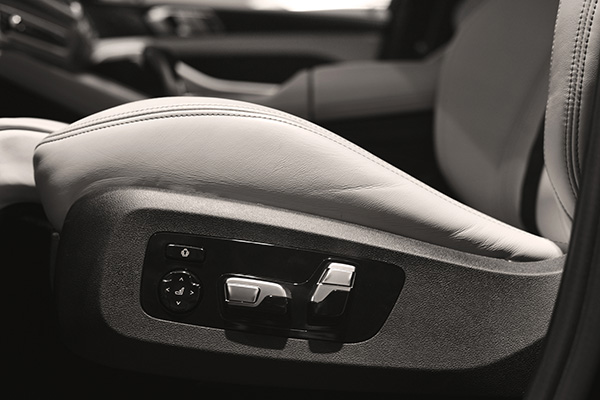
Drivers often overlook the importance of proper seat positioning, ensuring both safety and comfort while driving. Imagine embarking on a long road trip or even a short daily commute with a poorly adjusted seat—this could lead to discomfort, fatigue, and even accidents. So, why is proper seat positioning so essential?
Enhancing Safety with Correct Seat Positioning
Safety should always be a top priority when driving, and proper seat positioning is a fundamental aspect of road safety. Here's how:
1. Optimal Control and Reaction Time
When your seat is positioned correctly, you have better control over the steering wheel, pedals, and other controls. This allows for quicker reaction times in emergency situations. Your feet should comfortably reach the pedals without stretching, and your hands should be able to grip the steering wheel without straining.
2. Reduced Risk of Injury
In the unfortunate event of a collision, the position of your seat can significantly affect the severity of injuries. For instance, sitting too close to the steering wheel increases the risk of airbag-related injuries. Proper positioning ensures that airbags and seatbelts function as designed, providing maximum protection.
3. Clear Visibility
A well-adjusted seat ensures you have a clear view of the road, mirrors, and blind spots. This reduces the chances of accidents caused by poor visibility. Your eyes should be level with the middle of the windshield, and you should have an unobstructed view of the instrument panel.
Boosting Comfort for Long Drives
Comfort is not just about luxury; it's necessary to maintain focus and reduce fatigue, especially on long journeys. Here's why comfort matters:
1. Preventing Back and Neck Pain
Incorrect seat positioning can lead to back and neck strain. Over time, this discomfort can develop into chronic pain. Adjusting the seat to support the natural curve of your spine and ensuring the headrest is at the right height can help prevent these issues.
2. Reducing Fatigue
Driving long distances can be tiring, but a properly adjusted seat can make a big difference. When you're comfortable, you're less likely to experience fatigue, impairing your concentration and reaction time. Make sure your seat is at the right angle and distance to avoid unnecessary strain.
3. Enhancing Overall Driving Experience
Comfortable seating enhances the overall driving experience, making your time on the road more enjoyable. Whether you're navigating through city traffic or cruising on the highway, a well-positioned seat contributes to a more pleasant drive.
How to Properly Adjust Your Seat
Now that we understand the importance of proper seat positioning let's look at how to adjust your seat for optimal safety and comfort:
1. Adjust the Seat Height
Your seat height should be adjusted so that you have a clear view of the road and the dashboard. Your hips should be at or slightly higher than your knees, and you should be able to see the instrument panel without having to move your head.
2. Set the Seat Angle
The angle of your seat should support the natural curve of your spine. Aim for a slight recline of about 100-110 degrees to reduce pressure on your lower back. Avoid reclining too much, as it can affect your control and visibility.
3. Adjust the Distance from the Pedals
Move your seat forward or backward so that your feet can reach the pedals without stretching. Your knees should be slightly bent when pressing the pedals, and you should be able to pivot your foot comfortably between the brake and accelerator.
4. Position the Headrest
The headrest should be positioned to support the middle of your head, not your neck. This prevents whiplash injuries in case of a rear-end collision. The top of the headrest should be at least as high as the top of your ears.
Maintaining Your Seat Position
Once you've found the perfect seat position, it's important to maintain it. Here's how:
1. Regular Adjustments
Regularly check and adjust your seat position. Even small changes in how you sit can impact your comfort and safety. If someone else regularly drives your car, make sure you readjust your seat every time you sit after the other driver.
2. Consider Ergonomic Accessories
Consider using ergonomic accessories like lumbar supports or seat cushions to enhance your comfort. These accessories can provide additional support and help maintain the correct posture.
3. Awareness of Posture
Be mindful of your posture while driving. Sit upright and avoid slouching to prevent strain on your back and neck. Good posture can significantly reduce discomfort during long drives.
Ready for a safer, more comfortable driving experience? Visit Tri Star Automotive for a thorough car maintenance and safety inspection. Our skilled technicians will make sure your vehicle is in peak condition.